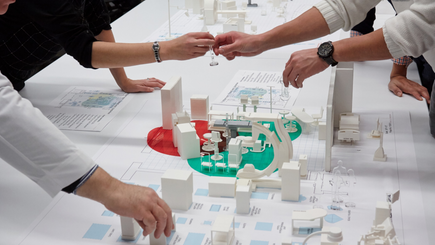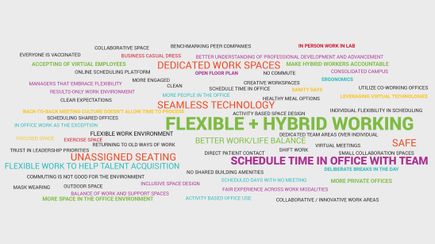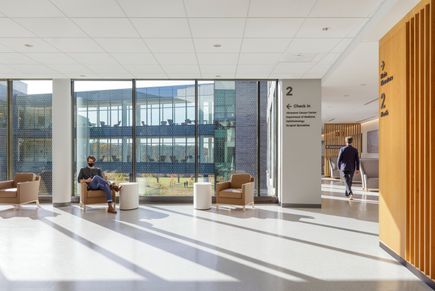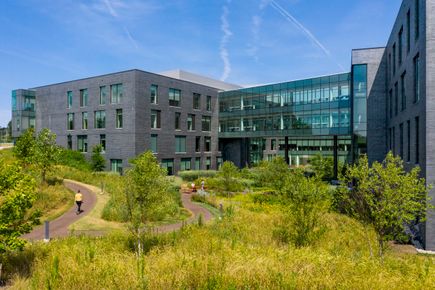Elevating Collaboration through Collocation
Share
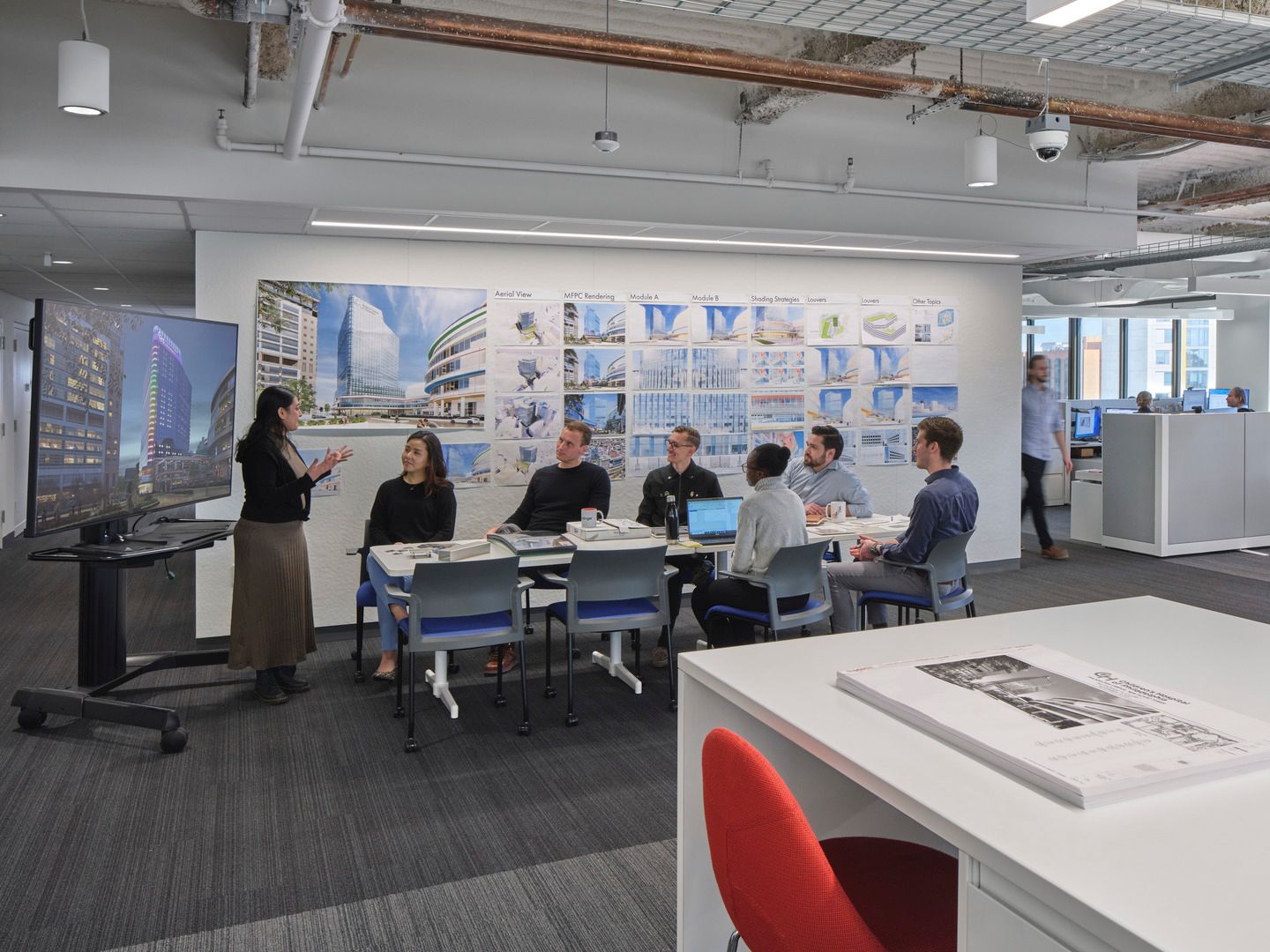
Collocation – that is, different groups working together at a location distinct from their offices – is not a new concept. Yet such a broad definition fails to convey that its function is determined by the specific people and circumstances involved in each use case. There are variations on collocation that have a long history in the industry, such as the classic job site trailer. But this model typically occurs on active construction sites where a permanent brick-and-mortar structure isn’t feasible, and it certainly doesn’t accommodate a broad-stroke collocation effort over a decades-long project that involves comprehensive teams of owners, architects, engineers, construction managers, and consultants.
That’s the type of diverse group involved in the collocation initiative for a new pediatric patient tower in West Philadelphia.
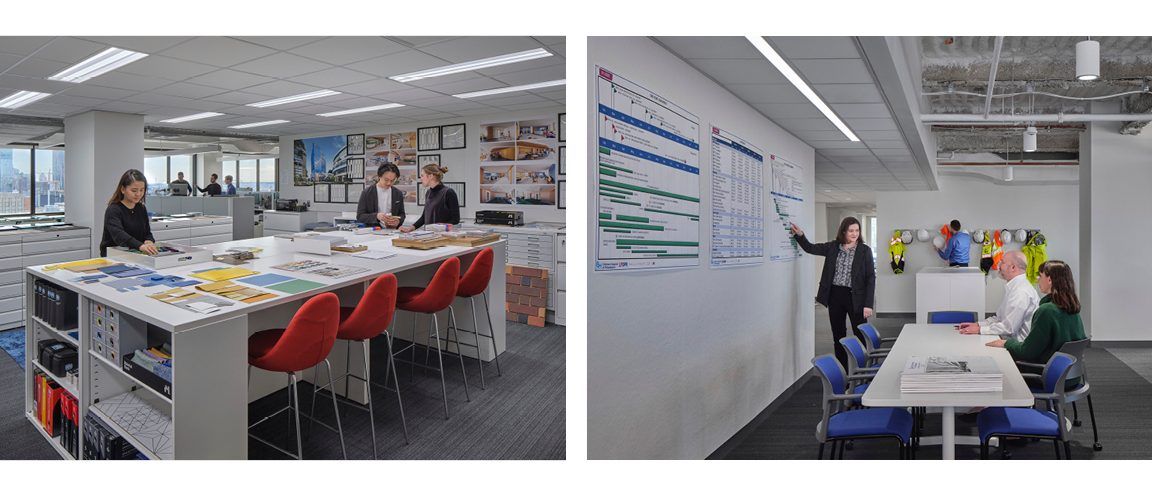
The decision to adopt a collocation strategy for the project was unprecedented for both the client and Ballinger, but from the outset, two specific factors have contributed to its successful outcome. First, the longstanding relationship with the client fostered a sense of trust between the owner team, construction manager, partners, and Ballinger. The decision to pursue a new work strategy would not have been possible without commitment and buy-in from the entire team, and that fundamental trust enabled both.
Second, Ballinger team members already take a type of collocation for granted, as it is an integral component of working at an interdisciplinary firm – it’s easy to walk over and chat with an engineer on the spot to discuss forward-thinking infrastructure strategies or to get a real-time take on the latest design direction. Many of the advantages we experience in an interdisciplinary environment are similar to the ones promised by integrated project delivery, both in a general sense and with collocation specifically: Quick interdisciplinary meetings. No lag time. Team synergy, camaraderie, and spirit. Experts nearby and at the ready. Universal investment in the project’s overall direction.
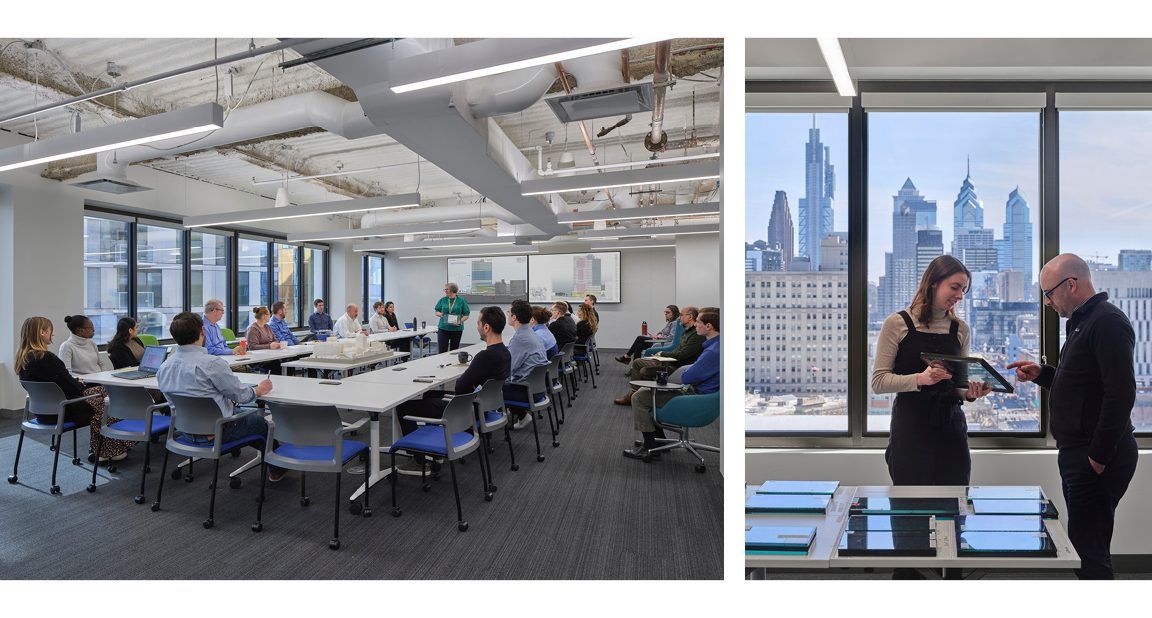
The collaborators on the new patient tower were all committed to creating a long-term, well-designed office, and the result is what we affectionately call the “Big Room.” This is a space that, just like permanent offices, provides a high level of in-office support and encourages collaboration and camaraderie. It has the same attributes as a main office, including Steelcase open workstations, varied collaboration space, state-of-the-art audiovisual equipment, and IT infrastructure for a shared, cloud-based platform that everyone works on – from CM to architect to owner.
“Large healthcare projects of this nature can span years. We recognized from the outset that this workspace was going to be different from the standard construction trailer and support high-quality work with the flexibility to grow as technology does.”
Over the last few years, we’ve learned many lessons from the Big Room collocation. For example, some spaces, such as a dedicated mock-up area, were not utilized as anticipated. And of course, in 2019, shortly after the Big Room was established, the pandemic struck, and everyone on the team had to work remotely. We saw that early investments in a technologically-advanced hybrid workspace eased both the transition away from the office and the return to it. When the health emergency ended, the teams came back to the office precisely because of the benefits we had all carefully coordinated and invested in.
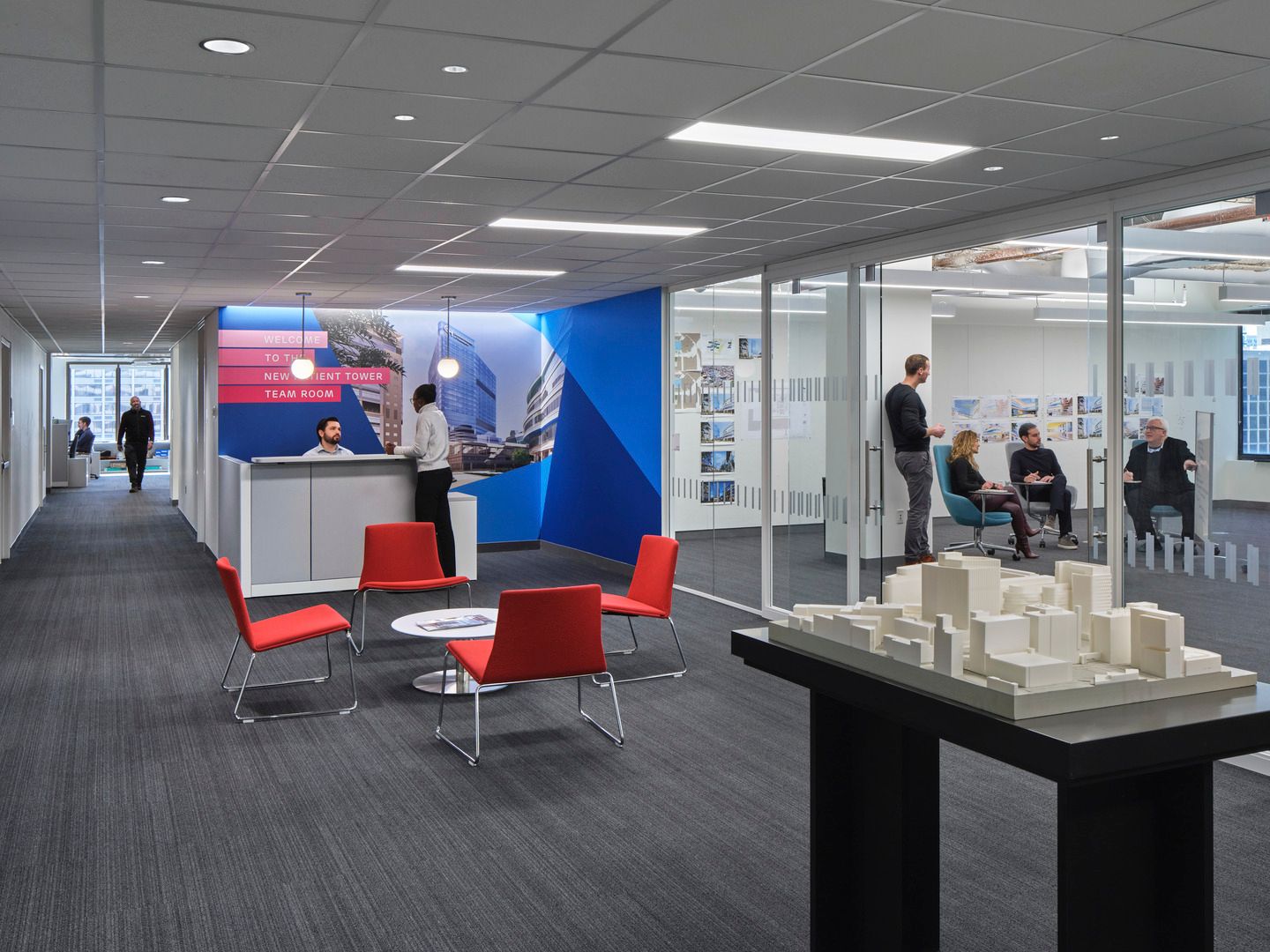
For over 100 years, Ballinger has recognized the benefits of in-person interdisciplinary collaboration and arranged our workspaces to leverage its value. We continue to celebrate the chance collisions of collocation even as our IT infrastructure allows for flexibility and remote work both within and beyond the Big Room. As designers of the built environment, we strongly believe in its power to bring people together and elevate our collective experience and our work.
Tagged
- Resources |
- Architecture |
- Engineering |
- Interiors |
- Healthcare |
- Workplace
